A group of Polyphony Digital sound engineers and designers gave an extensive presentation on Gran Turismo 7’s audio production at the CEDEC+KYUSHU game developer conference in Fukuoka, Japan.
The session was led by sound designer Masao Kimura and audio engineers Daisuke Takeuchi and Takashi Minagawa. It provides the most extensive behind-the-scenes look at Gran Turismo audio ever seen — and reveals a few possible new cars for the game in the process.
Although the presentation was actually hosted in November, it’s managed to fly under the radar until it was noticed by GTPlanet user BrunusCL82 in our forums. Japanese gaming site 4gamer summarized the session, and the original slides are available to download from Polyphony Digital’s corporate website.
The technical session was shared in Japanese and is geared towards those with a background in sound design and engineering, but we’ve done our best to translate and summarize the highlights for you in our article here.
Table of Contents
- GT Sound Recording History
- Microphone Testing
- Recording Car Sounds
- Tire Sounds
- Synthesized Engine Sounds
- 3D Audio in Gran Turismo 7
GT Sound Recording History
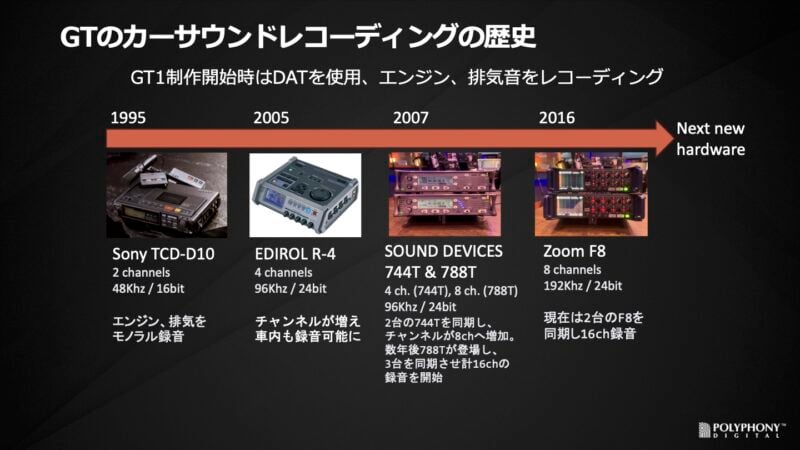
Kimura-san began the presentation by reflecting on the history of sound production in the Gran Turismo series.
Over its 25-year history, the team has recorded sounds from over 1,700 vehicles worldwide. The recording methods have significantly evolved, transitioning from using Digital Audio Tape (DAT) for engine and exhaust sounds to multi-channel recorders that capture a broader range of sounds, including interior and intake sounds.
Microphone Testing
PD’s sound team has also conducted extensive testing with various microphones to ensure the highest quality sound capture.
The Sennheiser MKH-60 emerged as the preferred choice due to its sharp directivity and high maximum sound pressure level, making it particularly suitable for recording vehicles.
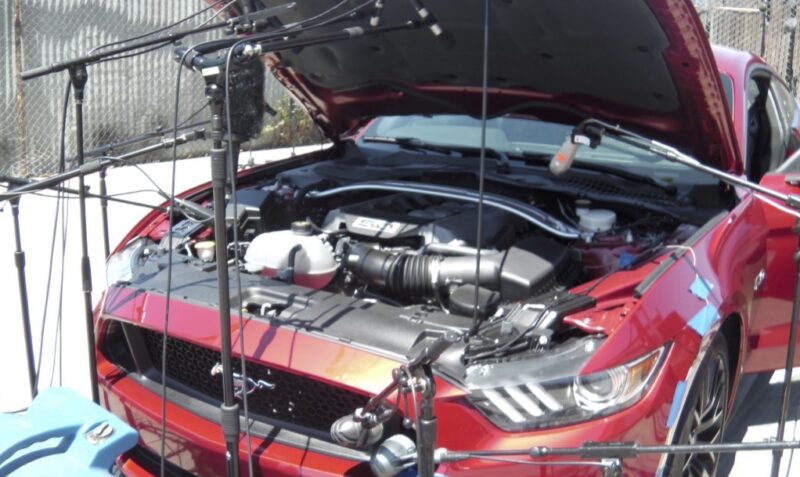
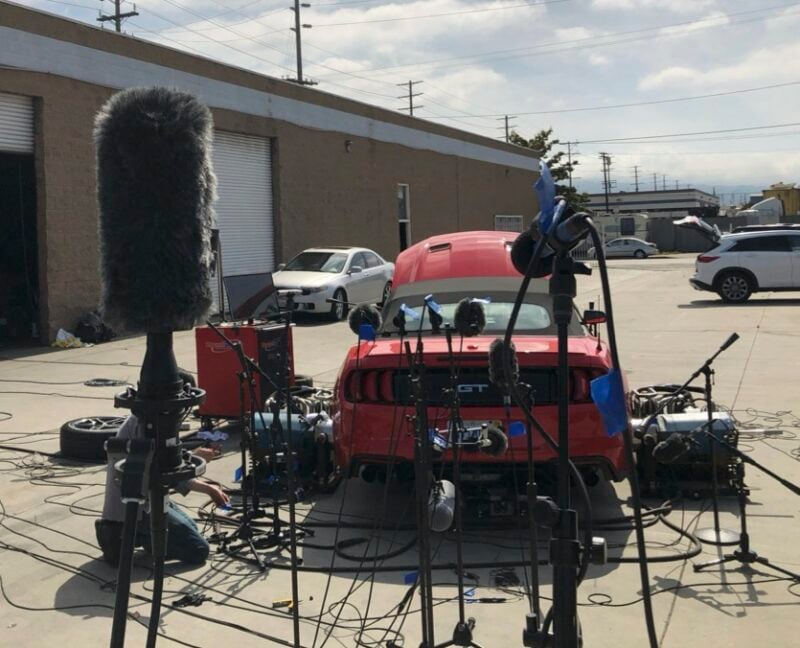
However, during the development of GT Sport, it tested over 50 types of microphones, including condenser, dynamic, and ribbon microphones. This rigorous testing process provided invaluable data for evaluating the sound differences and characteristics of various microphones.
Recording Car Sounds
The sound recordings are performed at facilities in Japan, Europe, and North America, using hub-type Dynapacks to apply a load to the vehicle.
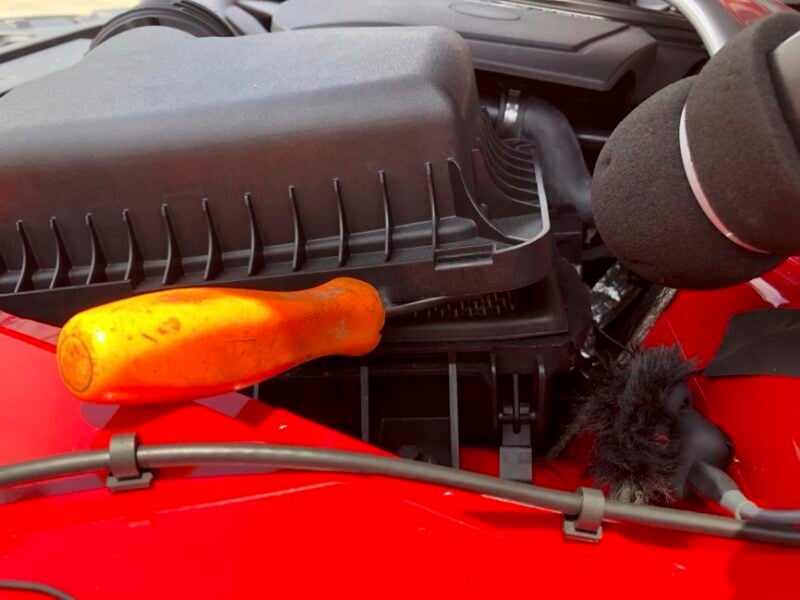
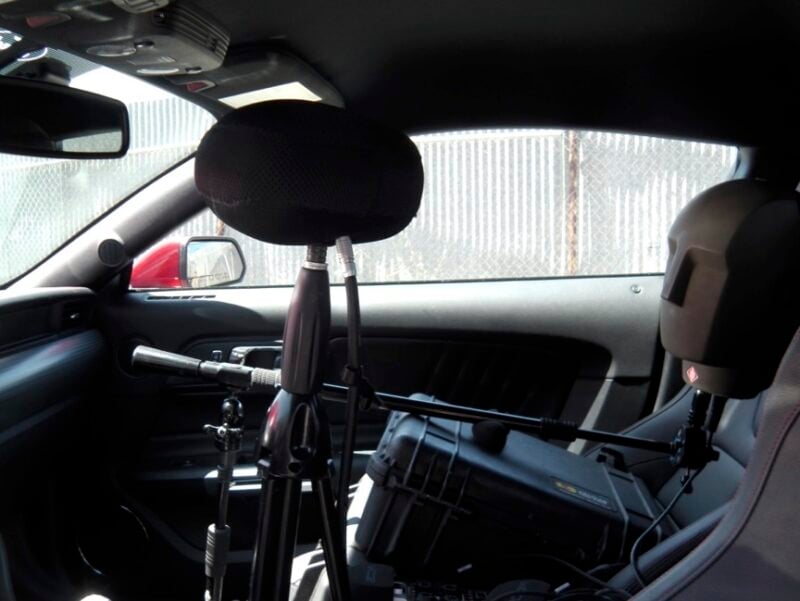
If recording at a facility is not possible, the team employs a more practical approach by attaching microphones directly to a car and recording it on a closed course. It also records impulse response data inside the vehicle, which is crucial in creating a sense of realism as it helps replicate sound dampening inside the car.
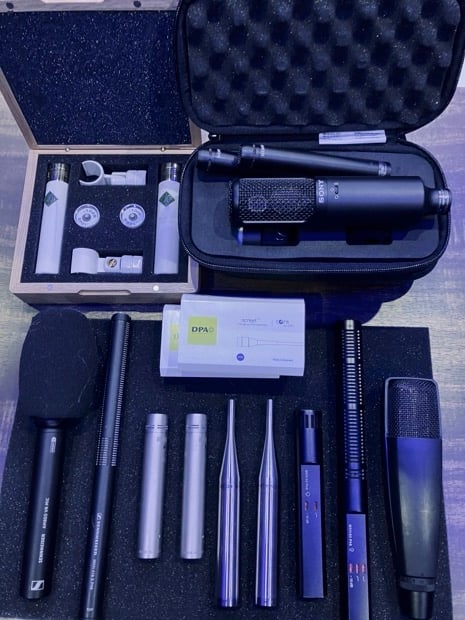
The team shared photos of the microphones currently used to record car sounds, including explanations of where each microphone is placed. The lineup includes:
- Intake: DPA 4062
- Engine: Rode NT5
- Exhaust (close): DPA 4011
- Exhaust (mid-range): Sony 100U
- Exhaust (long-range): Soyuz 013
- Interior: Sennheiser Ambeo
Notably, the slides in this section include a photo of a new car being recorded which has not yet appeared in a Gran Turismo title — which you may have spotted at the top of the article.
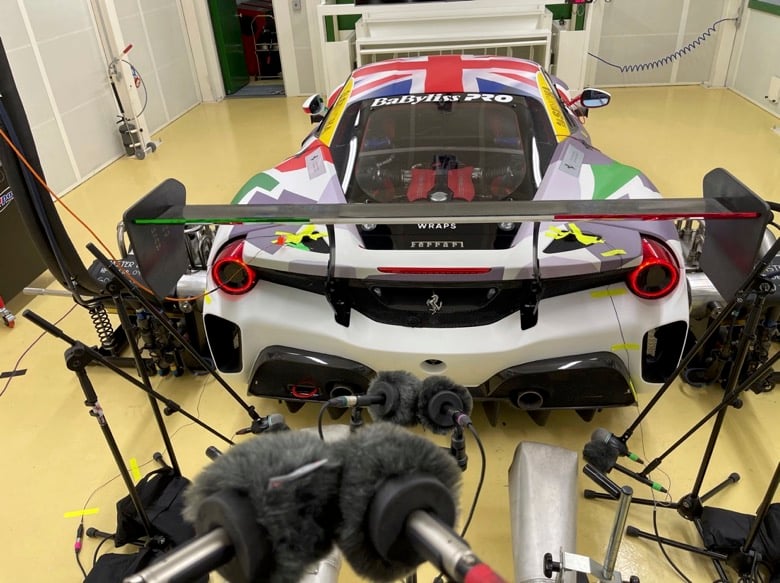
That’s the Ferrari 488 Challenge Evo ’19. This particular car is wearing the livery for the Graypaul Nottingham official Ferrari dealer as used in the 2020 Ferrari Challenge Europe season and driven by John Dhillon.
It’s not clear whether the car is being recorded as a reference sound for the very similar engine and exhaust setup found the F8 Tributo — which is already in the GT7 — or if the car itself is scheduled for addition at some point in the future.
Interestingly, the recording appears to be taking place at a garage at Nicholson McLaren in the UK. This specialist firm manufactures aviation and automotive engines, including the Williams unit found in the Singer DLS — a car which featured in one of the videos on Gran Turismo 7’s official soundtrack!
Tire Sounds
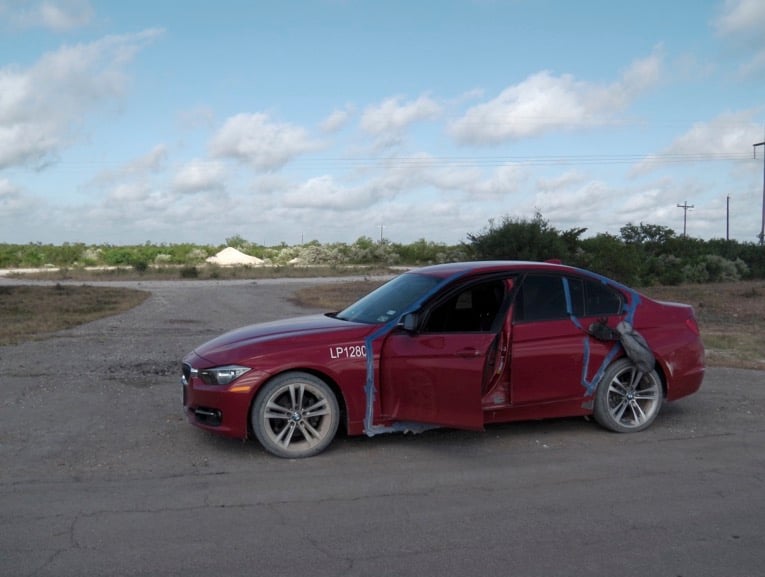
A significant part of the presentation was dedicated to the process of recording tire sounds.
The team collaborates closely with tire manufacturers and conducts tire sound recordings at test courses in Japan, the United States, and Scandinavia. They record a variety of tires in different situations, including on asphalt, gravel, dirt, grass, and even wet and snowy roads.
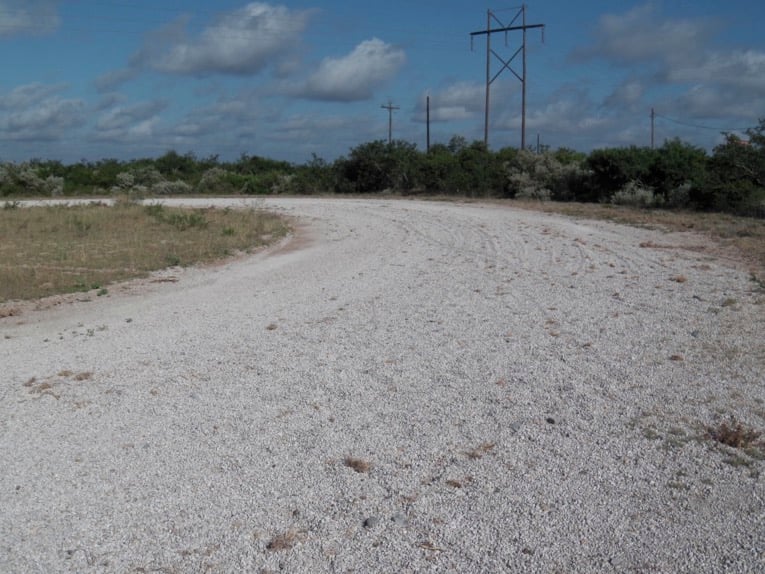
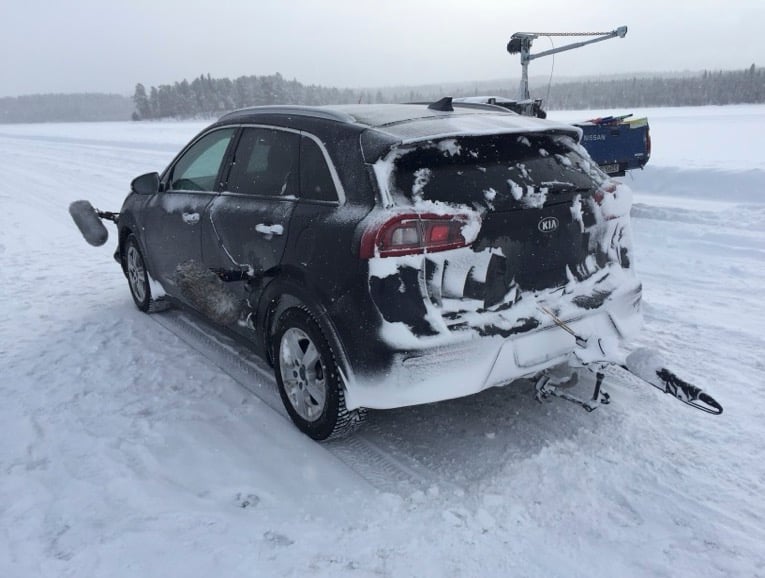
They also record numerous patterns while communicating with the driver to capture the sound effects of different tire loads. Curiously, the team noted this level of detail extends to capturing the sounds of accidents — such as tire blowouts — which can occur due to excessive driving on gravel or dirt roads.
Synthesized Engine Sounds
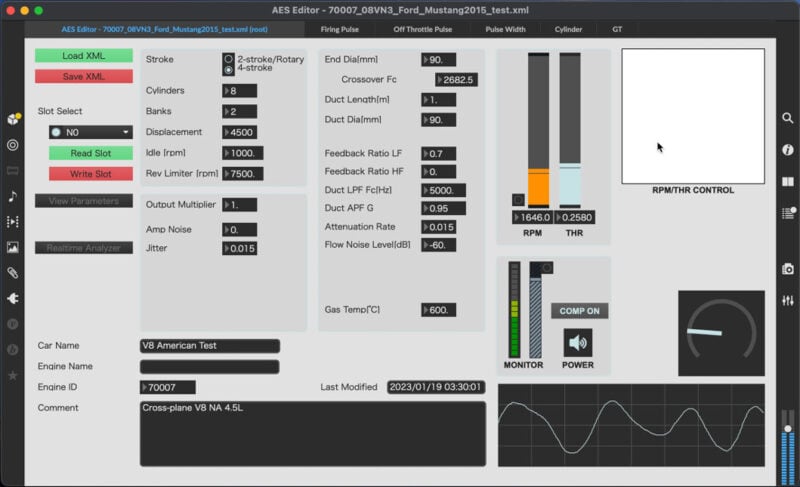
Takeuchi-san shifted the focus to the Advanced Engine Sound (AES) synthesizer, a tool that uses physical modeling to create engine sounds without using any sampling waveforms.
This approach allows the team to create sounds for vehicles that do not yet exist or are difficult to record, such as Vision GT cars. However, Takeuchi acknowledged that AES has its limitations, including a somewhat artificial tone and causes a high CPU load. This necessitates limiting the number of notes to around 10 to prevent affecting the game’s performance.
3D Audio in Gran Turismo 7
The team also introduced 3D audio in GT7, a significant advancement that allows for more flexible sound creation, including vertical sound expression.
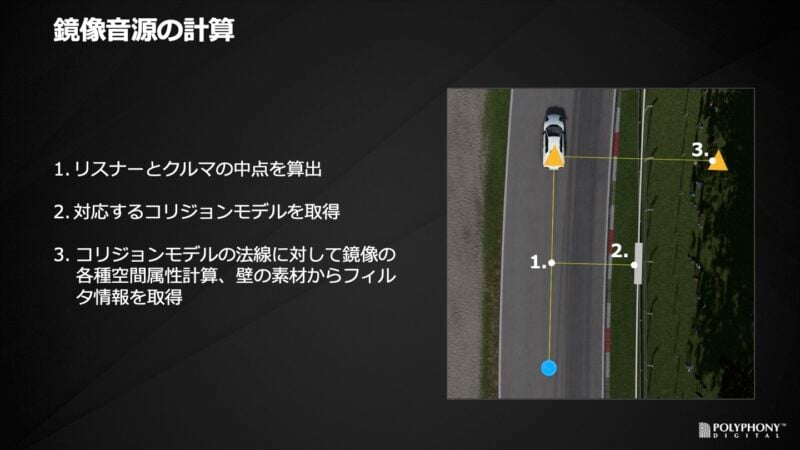
This was achieved by focusing on ambisonics, a technique that can combine signals into buses like conventional channel-based audio. They also introduced early reflection effects and directional reverb effects to improve the sense of presence and reproduce a complex sound field.
In their conclusion, the team emphasized that the Gran Turismo series continues to evolve in its pursuit of realistic sound creation, ending the presentation with remarks that “the GT series is exploring sound creation that respects reality, and continues to evolve day by day”.
See more articles on Audio, CEDEC, and Polyphony Digital.










